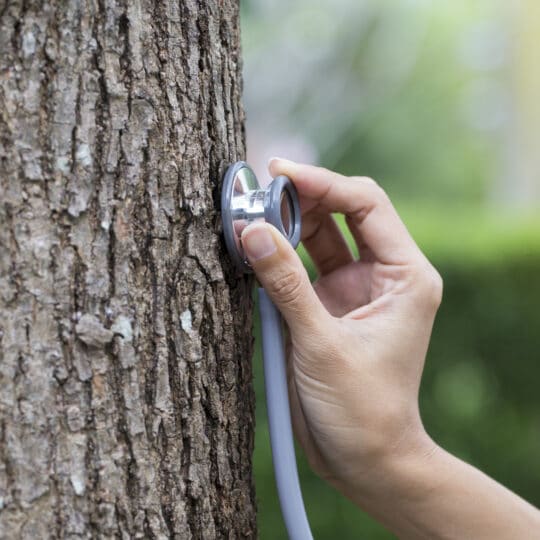Tips for Treating Tree Problems
And How to Identify Them
Posted
June 3, 2021

Think your tree may have health issues? If it’s not growing normally or there are spots on the trunk, branches, and leaves, you may want to look into these tips for treating tree problems.
Identifying Tree Problems
When you notice your tree doesn’t look well, it could be because of several different reasons, such as:
- Lack of nutrients. Trees need nutrient-rich soil which could come in the form of compost, mulch, or fertilizer.
- Compacted soil. It easy for soil to become compacted, especially in high-traffic areas. This doesn’t allow enough water, air, or nutrients to get to the roots.
- Pests. If a tree is stressed because of a lack of nutrients, compacted soil, or harsh weather, its weakness can attract pests.
- Structural damage. Improper pruning may lead to crisscrossed tree branches and a weakened structure.
- Injury. Weather can break branches. Animals can eat bark. Lawn equipment can damage lower areas of the trunk and roots.
If you suspect your tree has any of these issues, there are certain ways of dealing with them effectively. The important thing is knowing which problem to solve.
Treating Tree Problems
Before you make a plan to treat your tree, be sure you know what the real problem is. Consult a certified arborist to help diagnose any tree issues. Then use one of the following tips to help remedy.
- Clean up fallen leaves, branches, and bark around your lawn and use it to make nutrient-rich compost to add to the soil.
- Mulch your tree properly. Add a few inches around the tree, but not too close to the base of the trunk.
- Aerate compacted soil. Let it breathe around the tree to prevent crushed and restricted root growth.
- Spot treat any signs of pests and disease.
- Properly plan where to plant a tree so it thrives in that area and has space for roots to spread out. This means it shouldn’t be up against structures, sidewalks, or utility lines.
- Regularly prune any dead, diseased, or broken branches.
- Reinforce weak branches with cable and brace techniques.
- Inspect trees for any signs of injury and consult a certified arborist if needed.
Solving Problems with Proper Care
Regularly watering, feeding, and inspecting your tree are three ways of helping to ensure it stays healthy as long as possible. While some tree problems are out of our control, like severe weather damage, we can help make our trees stronger with regular maintenance. Contact Elite Tree Care for more information on the right way to care for trees, no matter the type or size.